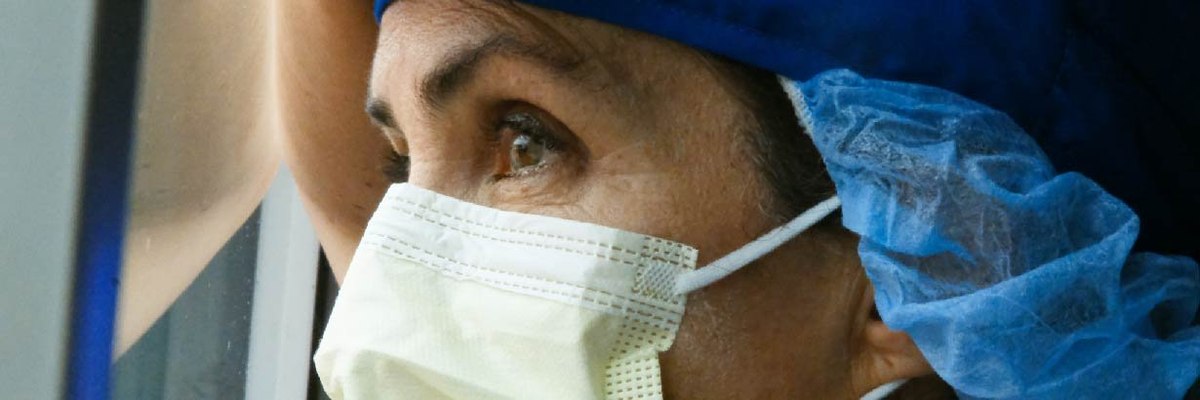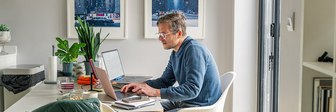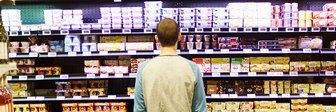About a fifth of essential workers have had to isolate during the coronavirus outbreak – this puts many in a financially precarious situation
New YouGov data shows that 22% of key workers face some reduction in their income if they self-isolate. This includes 6% who don’t get paid at all, while 11% receive statutory sick pay (£95.85 per week). Additionally, 5% receive more than statutory sick pay but less than their normal salary.
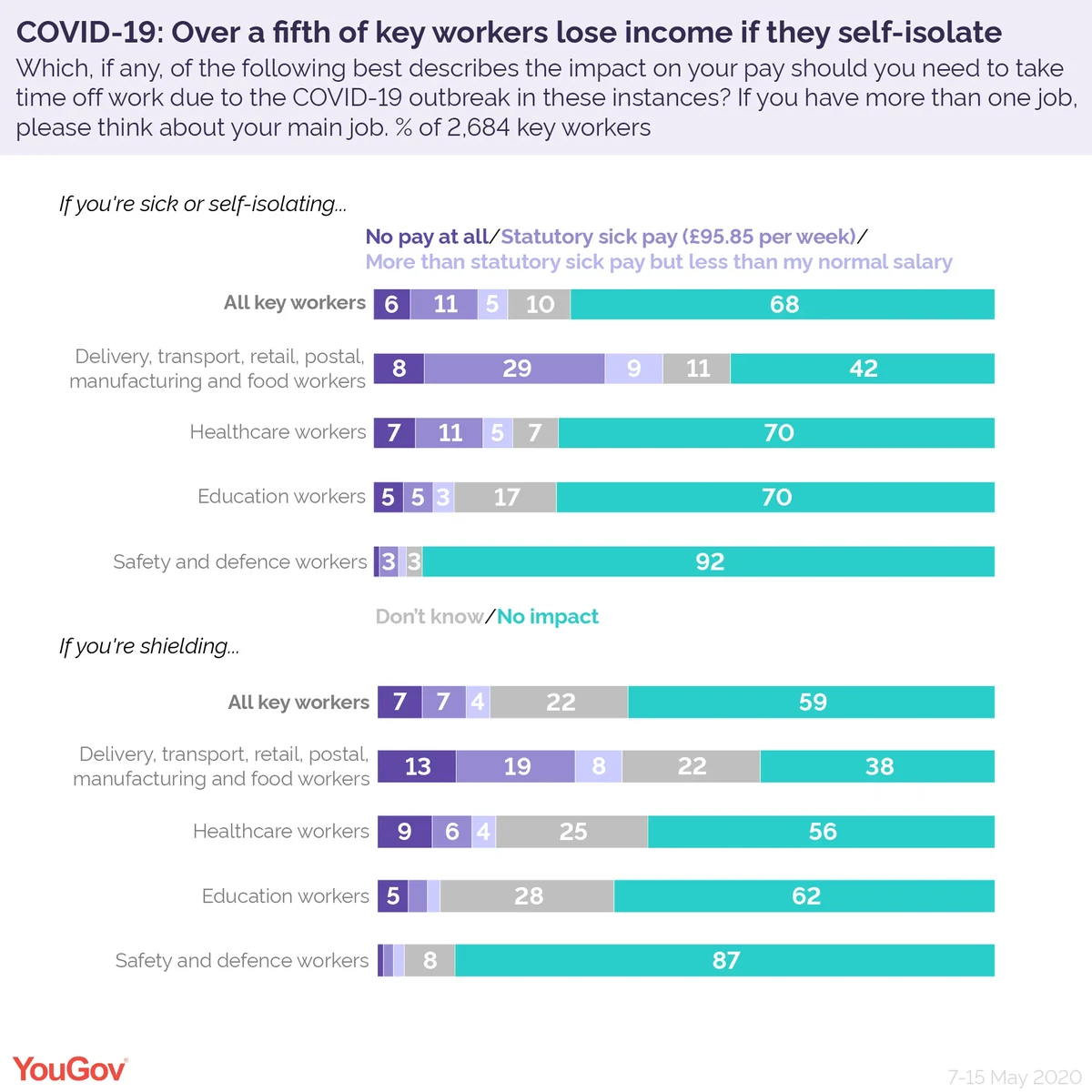
Close to a fifth (18%) of critical workers also miss out on pay if they have to shield due to being in a high-risk group, including 7% who receive no income at all. The actual numbers could be higher as over a fifth (22%) are uncertain.
Workers in the lowest paid sectors least likely to get paid if ill or shielding
Nearly half of essential workers in sectors like delivery, transport and food (47%) report that they would miss out on income if they were to self-isolate. In this group, 8% of workers would receive no pay at all, while 29% would have to get by on £95.85 per week.
Similarly, two in five workers in these sectors say their pay would be impacted if they needed to shield due to being in a high-risk group. This includes 13% who would not get paid at all, while 19% would have to live off statutory sick pay.
These workers include the people who deliver your parcels, takeaway orders and keep the public transport network running. They are the lowest paid among all essential staff. Over two in five (43%) earn under £25,000 a year, compared with an average of 26% across all key workers.
Among healthcare staff, who are the most exposed to the virus, nearly a quarter would lose some (16%) or all of their income (7%) if self-isolating. Nearly a fifth would also take a financial hit if they had to shield, including 9% who would not get paid at all.
Teachers and other education worker are in a slightly better position, although 13% would lose income if self-isolating. One in ten would also see some reduction in their earnings if shielding.
Prison guards, police officers and other safety and defence workers are mostly guaranteed income, with much lower numbers saying their pay would be affected if self-isolating (5%) or shielding (4%).
About a fifth of critical workers have had to self-isolate during outbreak
Among all key workers, 19% have had to isolate during the coronavirus outbreak. The figure includes 12% who displayed symptoms, while 7% did not but had been in contact with someone with suspected or confirmed coronavirus. A further 1% said they experienced symptoms but did not isolate.
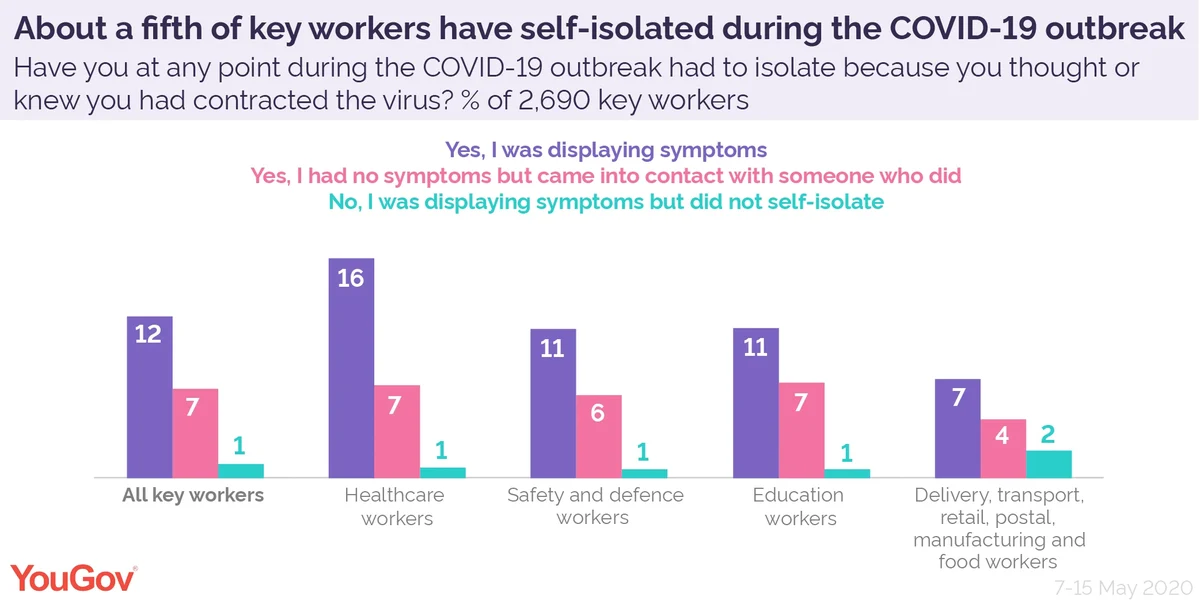
Healthcare workers are most exposed to the virus with 23% having isolated at some point – the highest of any group. Among these, 16% experienced symptoms, while 7% were asymptomatic.
Among teachers and education staff, 18% have had to quarantine. The figure is similar for safety and defence staff such as police officers and prison guards (17%).
Workers in sectors that include delivery, transport, retail, postal, manufacturing and food appear slightly less exposed, however 11% have still had to self-isolate. A further 2% say they’ve experienced symptoms but did not isolate.
The figures also vary between regions. London has the highest number of key workers who have quarantined themselves (22%) while Wales and Scotland, both at 16%, have the lowest.
